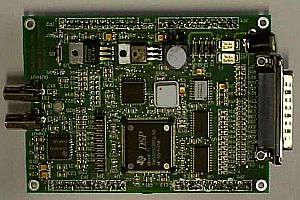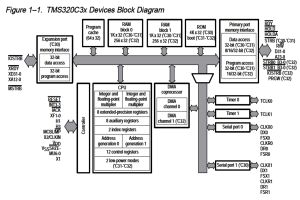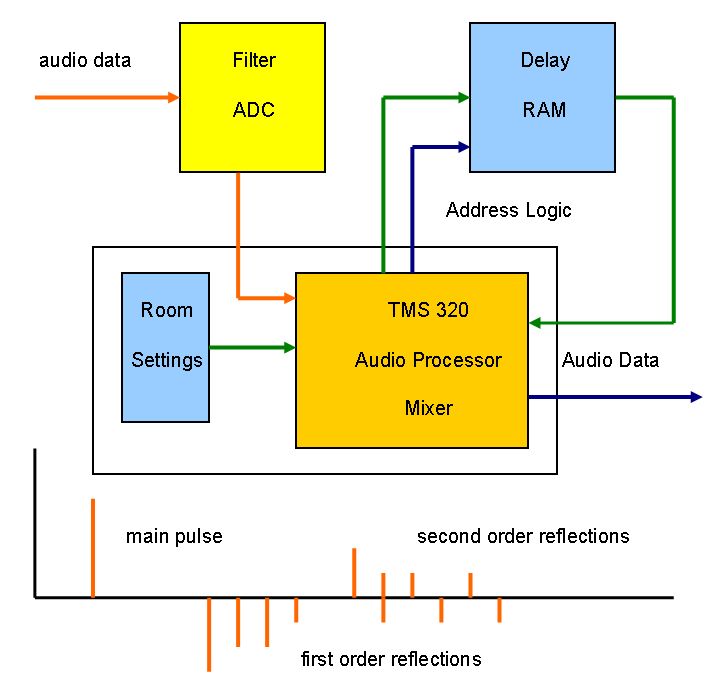| 96 kHz.org |
| Advanced Audio Recording |
Introduction to Echo Generation In modern recording studios, there is always the problem of disturbing reflections of the primary sound source created by walls, the floor and the ceiling. Certain reflections do accumulate to steady waves causing an unbalanced sound field making it hard to judge the true sound of a recording. To lower this problem a DSP can be used to generate reflections to overcome unwanted reflection possibly. Especially in LEDE-rooms diffusion is used in the live end area. In this approach we create some diffusive reflections the electronical way rather than using just passive diffusion acoustic diffusers.
The technique of echo generation in order to obtain a more ambient signal is known from various applications in musical signal processing. It is the classical method to create reverb and width. First applications are known from the 70tes when using tapes to create echos. A more complex delay structure can be achieved with modern DSP:
Years before I was working with a TMS320-System from Texas Instruments to test my first music and applications. A high speed DSP system nowadays is able to produce 100 reflections for an incoming audio signal easily. Only RAM is an issue since longer reverb will require a number of access actions to RAM. A simple program was designed to acquire the incoming data from a microphone with omni pattern, apply a kind of equalizer to met damping over distance and delay the signal appropriately to be able to replay it the inverted way. To distinguish incoming from replayed sound, another microphone was introduced performing common mode analysis with delayed signal (auto correlation filter). In this way the echo of the echo was also cancelled away from the primary echo, not to cause a kind of delay loop which leads to unwanted reverb effects.
Signal treatment chain of the echo cancelling algorithm. Delays are adjusted according to mic position and wall distances.
Conclusion and Summary DSPs can be used to enhance the sound in the live end of a mixing room.
See another article about Echo Treatment
|
| © 2004 J.S. |


